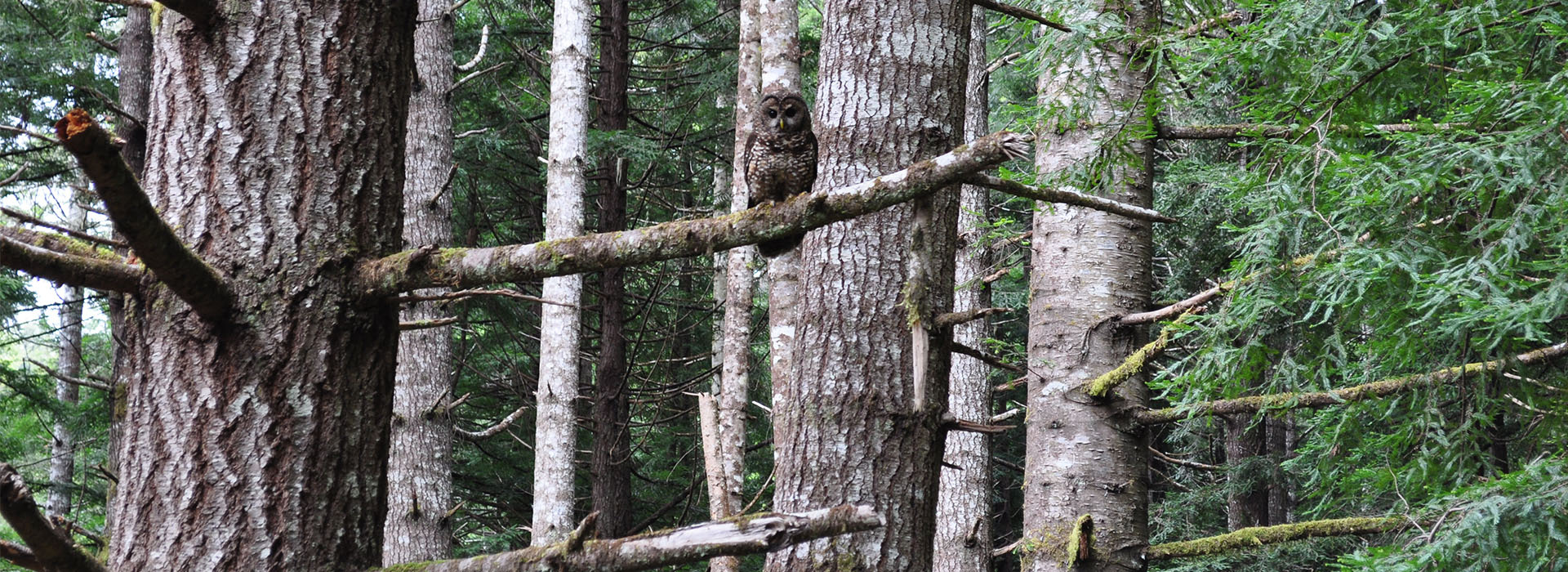
Habitat Conservation Planning
A major goal of MRC and HRC is to maintain and where possible, increase habitat for aquatic and land-based species. This requires long-term planning with federal, state, and local agencies as well as key stakeholders in forest management. HRC is continuing to implement the HCP it inherited.
HRC’s current plan provides for the following outcomes:
- Protect, enhance, and increase habitat for rare, threatened or endangered species covered in the plan.
- Mitigate the impact of land management on covered species.
- Maintain and improve biodiversity on our lands.
- Contribute to the recovery of threatened and endangered species.
- Attain “regulatory certainty” for endangered species management.
HRC’s Habitat Conservation Plan was developed by the previous owner and completed in 1999. The plan provides for conservation measures for many endangered and threatened species (including spotted owls, marbled murrelets, several salmonid species, rare mammals, amphibians, reptiles, and plants). HRC’s Habitat Conservation Plan and annual reports are available on this website.
Humboldt Redwood Company – HCP Key Components
Protection of Species
HRC inherited the 1999 Habitat Conservation Plan (HCP) for the property. Under the protections provided by the HCP, marbled murrelets continue to nest in the Marbled Murrelet Conservation Areas (MMCAs), a system of reserves made up of the largest redwood old growth forest stands on HRC lands. Second growth included in the MMCAs is expected to develop old growth structure over time that will provide additional habitat for murrelets, spotted owls, Pacific fisher, and other species. Similarly, the large riparian buffers required by the HCP are designed to provide tree canopy over streams for maintenance of cool water temperatures, filter strip properties, and abundant large wood for protection and enhancement of salmonid habitat. Management of these buffers over time should also increase the amount of old forest characteristics along these streams. In addition, the HCP provides protections for the bald eagle, peregrine falcon, western snowy plover, bank swallow, red tree vole, amphibians and reptiles, and rare plants.
Watershed Analysis
Watershed Analysis, a cornerstone component of the Habitat Conservation Plan, is a process that characterizes watershed conditions affecting aquatic habitat through multi-disciplinary scientific analyses, and from these analyses projects future trends in watershed conditions. The result generates forestry and monitoring recommendations and an opportunity for HCP updates through adaptive management. Collaborative partners include the California Department of Fish and Game, NOAA Fisheries, U.S. Fish and Wildlife Service, California Geologic Survey, local consultants and community groups. Public involvement in the form of issue identification at the start, and presentation of key findings and a public review draft near the end, is a part of the process. Final reports for the initial assessment of five of the eight watershed analysis units comprising the HRC ownership have been completed: Freshwater Creek, Elk River, Van Duzen River, the lower Eel River/Eel Delta, and the Upper Eel and Larabee Creek. Watershed analysis is currently ongoing in the remaining three watersheds – Bear River, Yager and Lawrence Creeks, and the Mattole River. Once all eight watersheds have gone through the initial process, the cycle will repeat every five years.
Conservation Areas
As part of its HCP, HRC has 6,640 acres conservation areas containing both old growth redwood stands and mature second growth redwood stands with significant residual old growth trees. Comprising six separate areas, these stands have been shown to be active nesting habitat for the endangered marbled murrelet and are located in the Elk River, Yager Creek, and Lawrence Creek watersheds. Conserving these stands also provides protection for other species that depend on mature forests, enhances stream quality, maintains biodiversity, and, along with riparian buffers, contributes to a network of habitat corridors in the region.
Roads Management
Roads can be a significant source of sediment that is delivered to watercourses, but this impact can be substantially reduced through proper management and upgrades. HRC intends to minimize the impacts of forest roads through an ambitious plan of road improvements. This includes ongoing road inventory and assessment, road upgrading and storm proofing, and cooperative restoration projects with state and federal agencies to improve water quality. HRC has a road inspection program that locates and prioritizes repair sites, and a process for monitoring road reconstruction sites for several years after work is completed. Information gained from this monitoring allows us to continually improve our road construction and maintenance standards.